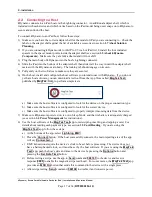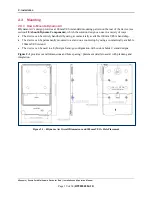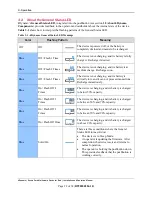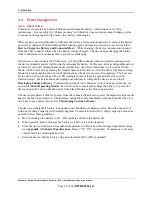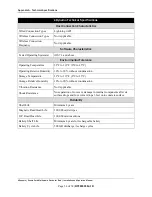
3 - Operation
kDynamo| Secure Card Multimedia Device for iPad | Installation and Operation Manual
Page 24 of 34 (
D998200284-10
)
3.4
Power Management
3.4.1
About Power
This device incorporates a built-in Lithium-ion rechargeable battery, which requires very little
maintenance. It is not subject to “charge memory” and therefore does not require deep discharge cycles
to restore its charge capacity like many other battery technologies.
When properly powered through its USB port, the device powers on automatically, recharges the battery,
powers the connected iPad host through the Lightning port, and remains powered on (see section
How to Charge the Battery and Connected Host
). While charging, the device consumes more power
from the USB connection than when the battery is fully charged. The device stops charging the battery
when it determines it is optimally full, to prevent overcharging.
If the device is not connected to USB power, or if the USB connection does not provide enough power,
the device primarily powers itself using the rechargeable battery. In this case, after a configurable period
of inactivity (no host commands and no user interaction), the device transitions to a low-power Sleep
Mode, which it indicates by turning the General Status LED solid on. After the device has been in Sleep
Mode for a configurable period of continued inactivity, the device powers off completely. The host can
set the device’s Sleep Mode and Power Off timeouts to values that are appropriate for the specific
solution design. For details about developing host software to configure the device, see section
. For details about the device’s behavior in its various power modes, see
section
. For instructions to check and recharge the battery, to power the
device on and off, and to wake the device from Sleep Mode, see the following sections.
The device also draws a trickle of power from the connected iPad host to power the magnetic stripe reader
head, if the head is powered on. The host may optionally send a command to turn the head off when it is
not in use to save power (see section
The device’s rechargeable battery is designed to last hundreds of charging cycles, but with time and / or
with use, its charge capacity will naturally degrade. To maintain the battery’s charge capacity as much as
possible, follow these guidelines:
Do not discharge the battery to 0%. Full discharge shortens the battery life.
When possible, plan to recharge the battery well before it is fully depleted.
Store the device at the lowest reasonable temperatures within its specified storage temperature range
(see
Appendix A Technical Specifications
; below 77°F / 25°C is optimal). Temperature is the most
critical factor in extending battery life.
Store the device with the battery charged to less than 100% (40% is optimal).








